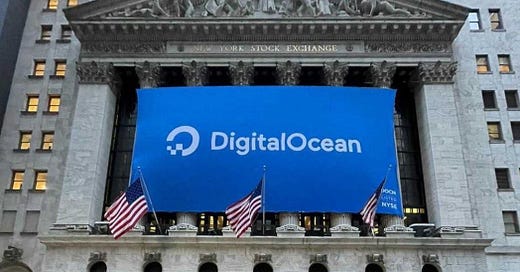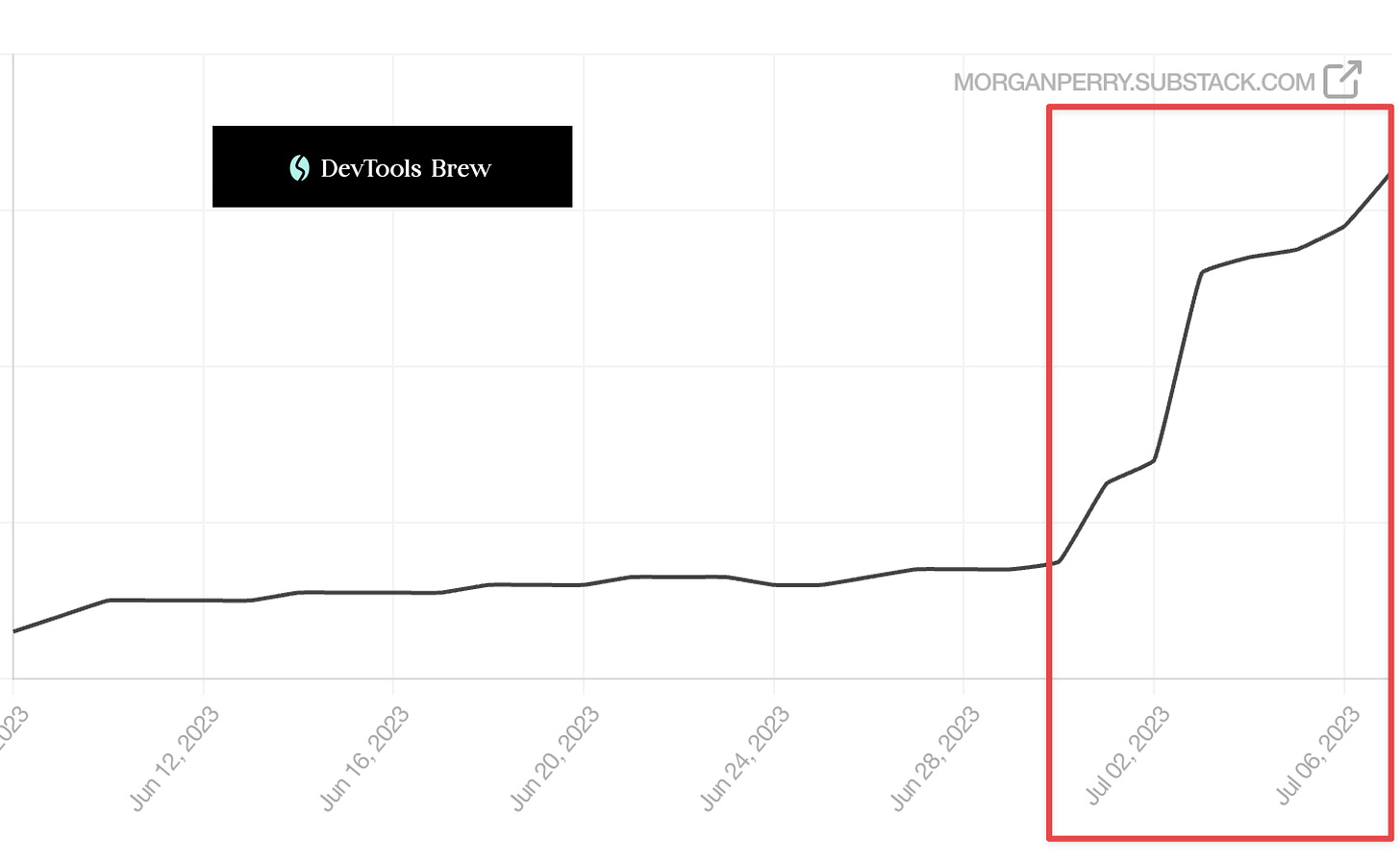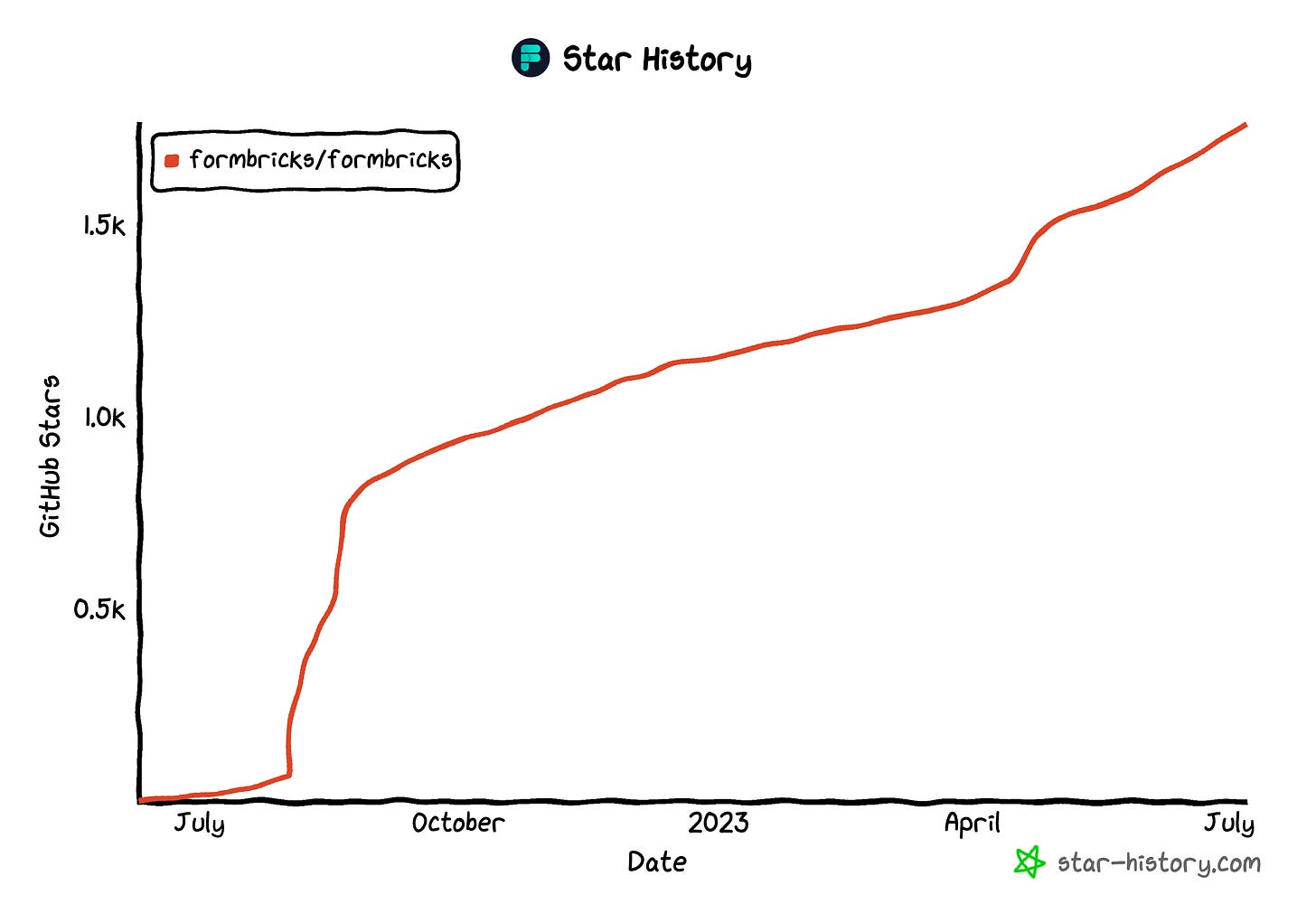DevTools Brew #18: From 0 to IPO: DigitalOcean Story, How to Grow a GitHub Project to 20k Stars, Building Open Source Startups with Cloud Foundry CEO...
Dear friends, welcome to DevTools Brew #18!
First of all, thanks to all those who have joined us recently. In just one week, the community has grown more than in the last 30 days. 🤯 It’s truly incredible!! 🤯
So if you're new here, my name is Morgan Perry, co-founder of Qovery, and I’m sharing every week a roundup of the remarkable stories and insights from the infrastructure and devtools world.
In this Issue #18:
📈 From 0 to IPO: DigitalOcean Story
💻 How to Grow a GitHub Project to 20k Stars?
⭐ Star History Weekly Pick
🎬 Building Open Source Startups with Cloud Foundry CEO
I hope you will enjoy this new edition.
Let's dive in!
📈 From 0 to IPO: DigitalOcean Story
In a world dominated by cloud computing giants like AWS, one company dared to compete head-on and emerged as a formidable player: DigitalOcean - the cloud infrastructure startup based in New York has achieved remarkable success in a short span of time growth
Today, let’s delve into the key highlights of a conversation with Ben Uretsky, Co-Founder, DigitalOcean.
Key Highlights:
Current Stats
$576M in revenues in 2022
500+ employees
1M+ total customers (all time); 500k+ currently active
Origins of DigitalOcean
Ben and Moisey had started ServerStack in 2003, a managed hosting business (dedicated servers + managed support service)
ServerStack was a bootstrapped, profitable business with 1,000 servers around the world
However, the Uretsky brothers identified a critical challenge: they were losing a significant amount of business to RackSpace. To address this issue and embrace the potential of cloud computing, they made the strategic decision to transition their focus.
Ben and Moisey Uretsky recognized the need for a new approach to cloud hosting due to complicated pricing plans and platforms that didn't meet user needs.
They began building the foundation for DigitalOcean in 2011 and formally incorporated the company in March 2012.
DigitalOcean faced skepticism from potential investors as Amazon dominated the hosting market.
The team's encounter with IA Ventures' Brad Gillespie led to their application to TechStars New York, despite having only 24 hours to complete it.
Though DigitalOcean didn't make it into the TechStars program initially, they continued working on the product. A chance invitation from David Tisch, after being rejected, resulted in DigitalOcean joining the Boulder program. The accelerator program provided a formative period for the company, allowing the team to focus on the product.
Positioning & Differentiation
DigitalOcean founders drew inspiration from books like "Positioning: The Battle for Your Mind" to shape their market position.
They learned from their previous business experience and understood the importance of positioning themselves differently to stand out in the market.
To avoid direct competition with enterprise market leaders like AWS, they focused on the developer market segment and positioned themselves as the simplest and easiest-to-use cloud provider.
They embraced “simplicity” as their key differentiator, enabling them to cater to the unique needs of small companies and startups.
They differentiated themselves by putting the developer first, understanding their goals, and delivering value without charging for it through educational content.
By offering a straightforward, easy-to-use platform, DigitalOcean created an emotional connection with developers, fostering high customer satisfaction and word-of-mouth recommendations.
The Shift to SSDs
In a risky move to differentiate themselves, DigitalOcean decided to transition from regular hard drives to SSDs, despite the higher costs involved.
This move required signing up twice as many customers to stay in business.
The success of this decision became evident when a story about it hit Hacker News, leading to a tenfold increase in customer acquisition.
Selling to Developers
You have to pick a side. You are either on the developer side or the enterprise side - Ben Uretsky (DigitalOcean co-founder)
The founders chose to help developers with their education and helping them solve problems by giving them something of value without charging for it, like free and educational content
They built a community of content with a couple of thousand tutorials on how to leverage open source - ending up to reached 3M visitors a month
Referrals and organic acquisition are the largest sources of sign-ups
By staying in touch with developers' changing needs, DigitalOcean aims to remain a valuable and relevant platform.
Fundraising Vs Bootstrapping
DigitalOcean founders advise bootstrapping and self-sufficiency as much as possible, using debt and other creative methods to fund their growth.
They have raised more debt ($300M) than venture capital ($123M) in the beginning. They used debt to buy all their storage and servers, much cheaper than financing through equity in terms of dilution
For Ben Uretsky, here are 2 reasons to go to a VC:
1) You had a proven business model and need to accelerate your growth
2) You have a really audacious idea, and there’s no other way of bringing it to life without venture capital
Technical Challenges & Scalability
Scaling while maintaining simplicity was a significant challenge for DigitalOcean.
They needed to ensure their platform could handle sophisticated workloads while keeping the user experience simple and intuitive.
The focus was on backend performance, robustness, security, and ensuring the platform could support a growing number of businesses.
Recruiting becomes your #1 job when you’re scaling. Ben (founder) spent over 50% of his time on this crucial task.
Culture played a vital role in scaling, and DigitalOcean learned the importance of codifying and nurturing their culture to maintain alignment and decision-making processes. “We messed up our culture initially, ended up having lots of issues, we hired a head of people and codified our culture but should have done it much earlier” - Ben Uretsky
Rapid Growth and CEO's Focus:
DigitalOcean has continued its growth trajectory, attracting significant funding.
As (former) CEO, Ben Uretsky shifted his focus from product development to financing and hiring.
Despite his love for technology, Ben ended up spending most of his time on meetings and phone calls, recognizing the importance of hiring for shaping the startup's future.
On Remote Work
Remote work has been embraced by DigitalOcean, with approximately half of the team working remotely, highlighting the company's commitment to flexibility and inclusivity.
DigitalOcean founders bet on a remote culture as they thought remote was a differentiator for them. Back at the time, it was harder to find people in NYC (especially in 2010) that knew about infrastructure and had seen hyper-growth
Future Plans
DigitalOcean remains committed to simplicity and the developer experience as they continue to scale.
Their focus is on streamlining infrastructure provisioning and making it even easier for developers to deploy applications.
They aim to empower developers by reducing complexity, enabling them to focus on coding and building innovative applications.
💻 How to Grow a GitHub Project to 20k Stars?
Thrilled to share the key insights from Nevo David (Head of Growth of Novu) about the remarkable journey of growing Novu's GitHub repository from 2,000 to over 20,000 stars in just one year.
Key Insights
Systematic Growth Strategies
Novu's remarkable growth trajectory was driven by maximizing visibility and driving traffic to the project.
They leveraged external platforms like DEV, Medium, Hacker News, and Reddit to become trending repositories on GitHub.
They published articles and collaborated with influencers on platforms and content formats that resonated with the target audience.
Leveraging Developer Influencers for Growth
Influencers played a key role in Novu's growth strategy, tapping into their significant traffic potential.
Collaborating with influencers aligned with Novu's target market generated buzz and attracted more stars to the repository.
They diversified influencer collaborations to reach different regions and maximize impact.
Crafting an Effective Readme and Documentation
David emphasized the importance of a well-crafted Readme file and comprehensive documentation in capturing user attention.
Creating clear, concise, and engaging project descriptions for both technical and non-technical audiences.
Experimenting with different formats, including memes and captivating one-liners, to pique curiosity and drive interest.
Short-term Focus and Niche Audience
The significance of setting short-term goals and targeting niche audiences for initial growth momentum.
Balancing development and marketing efforts to deliver value through targeted marketing strategies.
Nevo's personal experience of prioritizing marketing activities for several months to achieve substantial growth.
Nevo David's insights offer valuable guidance to open-source founders and developers seeking rapid growth on GitHub.
—> Check out the full article on Dev.to.
⭐ Star History Weekly Pick
The Star History Weekly Pick is:
Formbricks: “Open Source Surveys & Experience Management Solution.”
⭐️ 1.8k stars reached
🎬 Building Open Source Startups with Cloud Foundry CEO
Abby Kearns has a long history in the open source ecosystem as the previous CTO of infrastructure automation platform Puppet, previous CEO of Cloud Foundry Foundation, and an active investor and advisor to many open source startups.
In this episode, you'll learn about Puppet's journey, the role organizations like Cloud Foundry play in the open-source ecosystem, Abby’s views on open-source projects versus products, her advice to open-source startups & much more!
Full audio episode here & video episode here
It’s already over! If you have any comments or feedback, you can reach out to me on LinkedIn or Twitter.
Thanks for reading,
Morgan
Please share DevTools Brew with your friends, and subscribe







